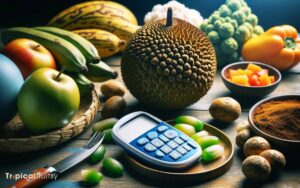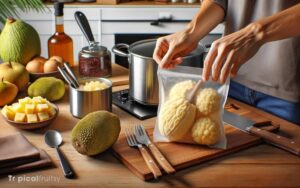How to Make Breadfruit Leaf Tea? 6 Easy Steps!
Breadfruit leaf tea, a traditional beverage hailing from various tropical regions, is gaining popularity as a herbal infusion with potential health benefits.
This guide provides a concise overview of the methodical process required to craft this unique tea.
The preparation begins with the careful selection of high-quality breadfruit leaves, which are integral to achieving the desired flavor and therapeutic properties.
Subsequent steps involve meticulous cleaning, drying, and brewing techniques to ensure the integrity of the tea’s essence.
We will explore the appropriate utensils for infusion, optimal brewing times, and potential flavor enhancements to cater to individual palates.
Lastly, advice on serving and proper storage will be imparted to maintain the tea’s freshness.
This introduction aims to equip enthusiasts with the foundational knowledge necessary to prepare breadfruit leaf tea with confidence.
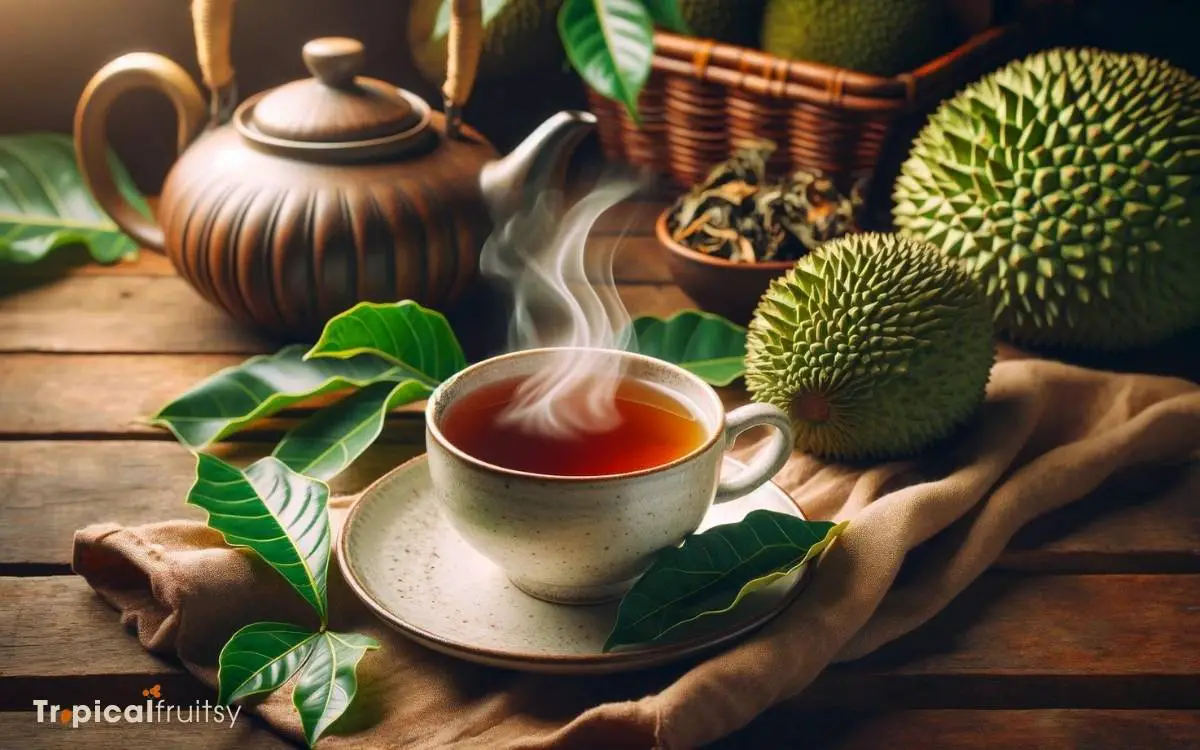
Key Takeaway
Step 1: Sourcing Quality Breadfruit Leaves

One must ensure the procurement of high-quality breadfruit leaves, as they are the cornerstone of crafting an authentic and beneficial breadfruit leaf tea.
The leaves should be sourced from mature Artocarpus altilis trees, which have been grown in optimal conditions, free from harmful pesticides and environmental stressors.
The ideal leaves are vibrant green, robust, and unblemished, indicating they possess the maximal potency of their inherent beneficial compounds.
It is imperative to engage with reputable suppliers or harvest the leaves oneself, ensuring their freshness and traceability.
The careful selection of these leaves is paramount, as it directly influences the efficacy and flavor profile of the resulting infusion. Therefore, a meticulous approach to sourcing is not merely recommended; it is essential.
Step 2: Preparing the Leaves
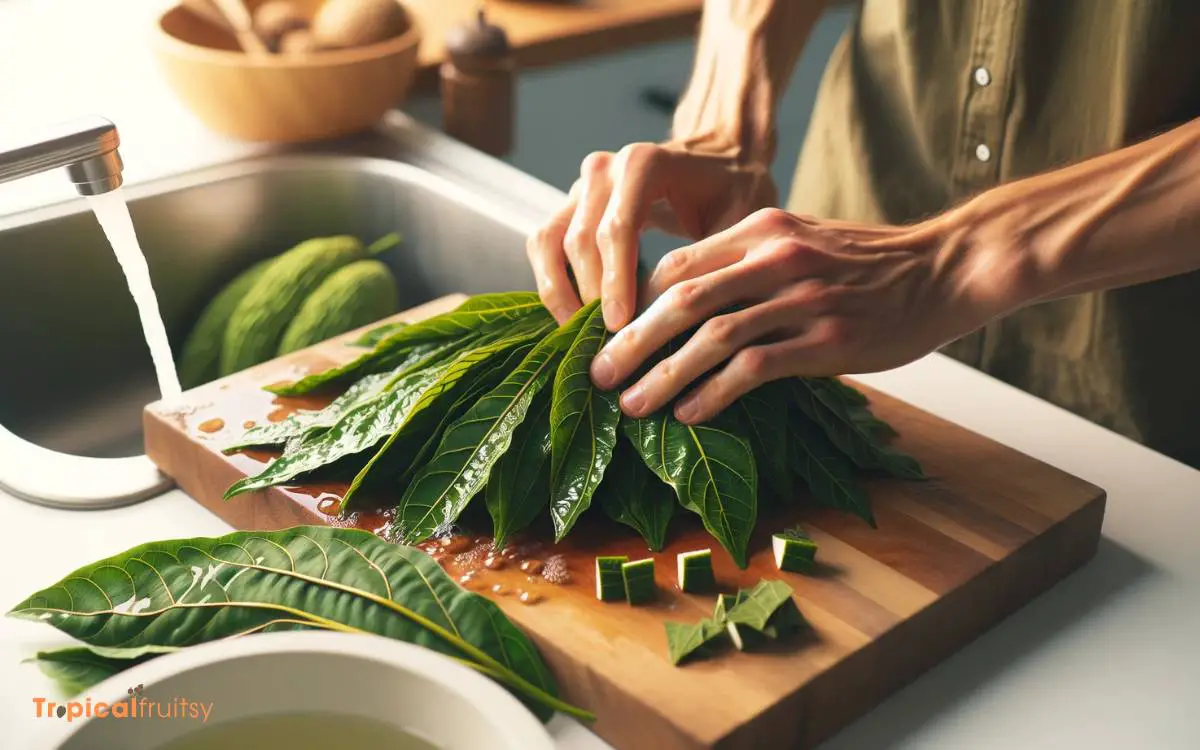
Once quality breadfruit leaves have been sourced, the next crucial step is their preparation, which is pivotal in ensuring the purity and taste of the tea.
The leaves must be meticulously cleaned to remove any impurities that could compromise the tea’s flavor or health benefits.
Subsequently, employing proper drying techniques is essential to preserve the leaves’ therapeutic properties and prepare them for infusion.
Leaf Cleaning Methods
Before brewing breadfruit leaf tea, it is essential to thoroughly cleanse the leaves to remove any dirt or impurities.
This ensures the purity and quality of your tea. To prepare the leaves, one must carefully follow a meticulous cleaning process:
- Begin by selecting fresh, healthy breadfruit leaves. Avoid those that show signs of damage or disease.
- Rinse the leaves under cold running water to wash away any loose debris and potential residues on the surface.
- For a deeper clean, submerge the leaves in a bowl of water mixed with food-grade baking soda, and gently agitate them. After soaking for a few minutes, rinse the leaves again in clean water.
This methodical approach guarantees that the breadfruit leaves are pristine and ready for tea brewing.
Drying Techniques
After cleaning, the breadfruit leaves must be dried using appropriate techniques to ensure they retain their beneficial properties for tea brewing.
A traditional and effective method is air-drying the leaves in a well-ventilated area, away from direct sunlight. This process can take several days, depending on the humidity and air circulation.
The leaves should be spread out in a single layer on a clean, dry surface, such as a mesh rack, which allows air to circulate freely around the leaves, facilitating even drying.
It is paramount to turn the leaves periodically to ensure consistent dehydration. Once the breadfruit leaves are brittle to the touch, they are sufficiently dry for storage or immediate use.
With the leaves prepared, attention must now shift to choosing your utensils for the subsequent step in tea preparation.
Step 3: Choosing Your Utensils
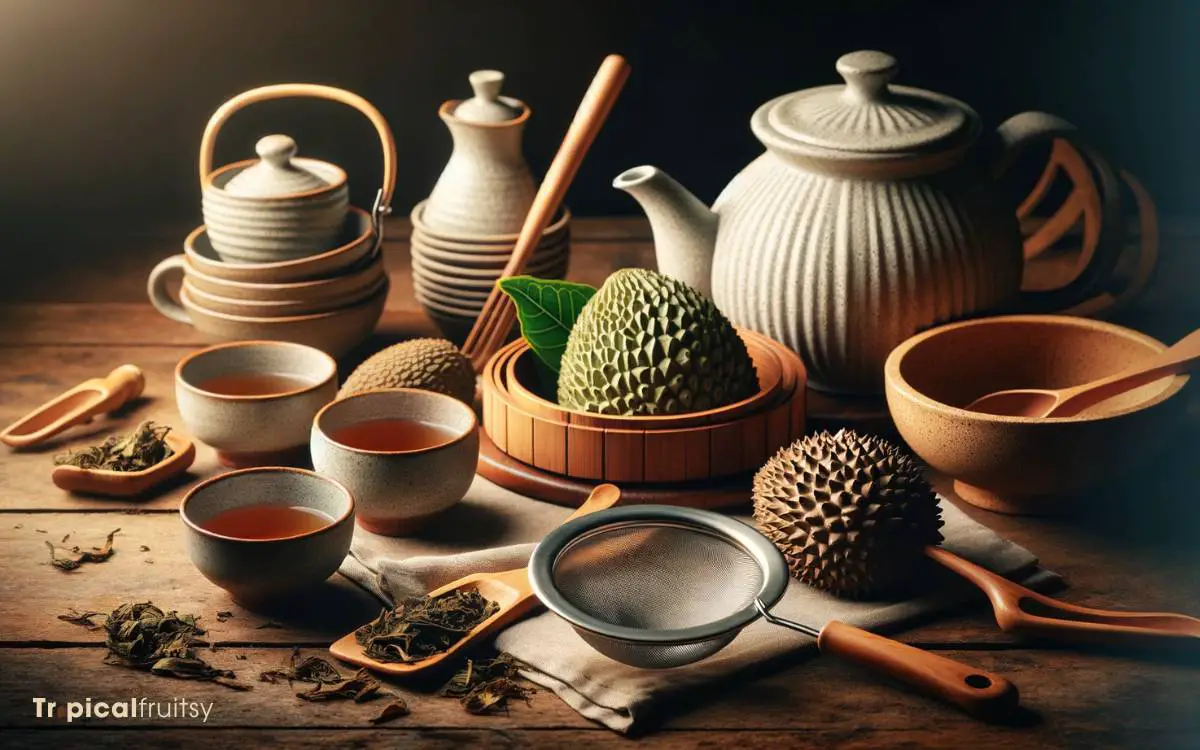
Selecting the appropriate utensils for brewing breadfruit leaf tea is crucial for the process and outcome of your infusion. A meticulous choice of tools ensures the integrity of the tea’s flavor and medicinal properties.
When preparing to brew this traditional beverage, consider the following:
- Teapot or Infuser: A ceramic or glass teapot is preferred as it does not impart any flavors into the tea. If using an infuser, ensure it is spacious enough to allow the leaves to expand and release their essence.
- Measuring Tools: Precise measurements are vital. Use a standard measuring spoon for the leaves and a measuring cup for the water to maintain consistency in strength and flavor.
- Strainer: A fine-mesh strainer is essential to separate the leaves from the liquid, ensuring a clear and smooth tea free from debris.
Employ these tools methodically to create the perfect cup of breadfruit leaf tea, rich in both taste and tradition.
Step 4: The Brewing Process
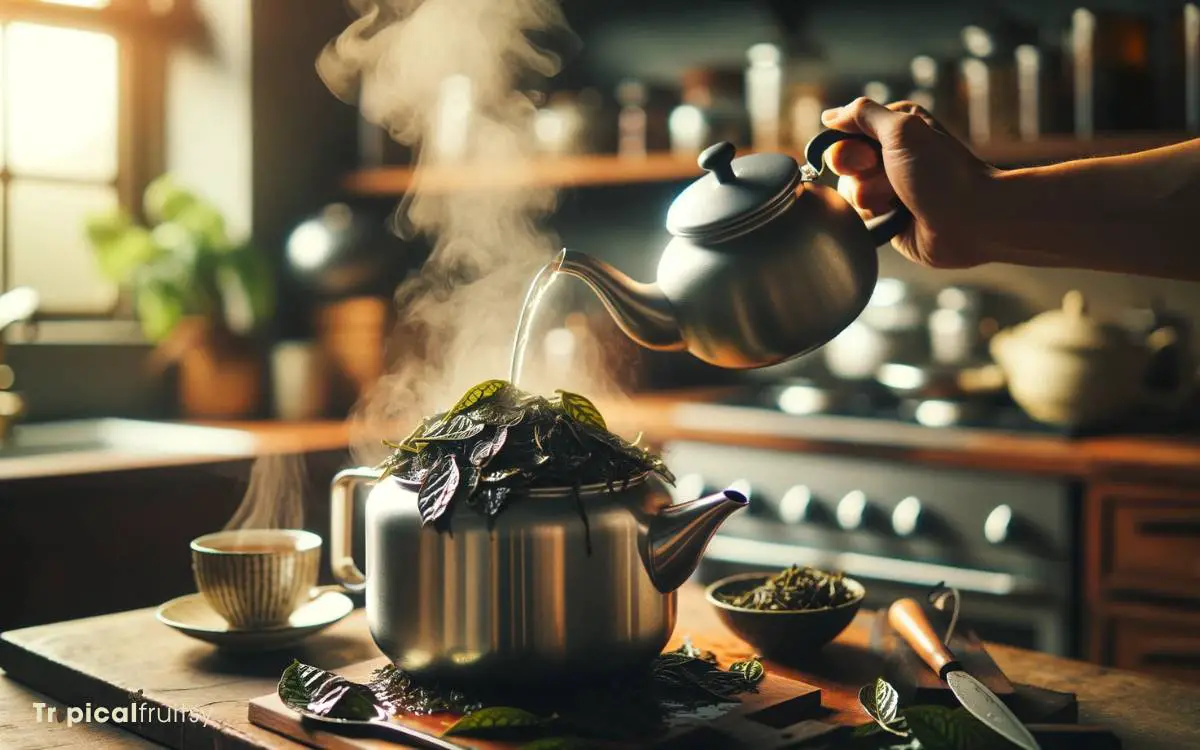
Having gathered the necessary utensils, the brewing process for breadfruit leaf tea commences with boiling fresh water to an ideal temperature.
This precise heat is crucial, as it extracts the quintessential oils and compounds responsible for the tea’s therapeutic properties—without degrading them.
Once boiling, the water is then poured over the cleaned and dried breadfruit leaves, which have been placed in a teapot or directly in a cup.
The steeping time is pivotal; too short, and the infusion will lack depth, too long, and the tea may develop a bitter taste.
A period of 5 to 10 minutes is recommended, allowing the leaves to unfurl and release their full flavor profile.
Step 5: Flavor Enhancements

To enhance the delicate taste of breadfruit leaf tea, one may consider the addition of natural sweeteners or aromatic spices.
While the tea itself boasts a subtle flavor profile, the incorporation of complementary condiments can elevate the sensory experience.
It is advised to judiciously select additives that harmonize with the tea’s intrinsic notes, ensuring a balanced and refined cup.
Here are three suggested enhancements:
- Honey: A drizzle of honey can introduce a gentle sweetness that complements the natural flavors without overshadowing the tea’s essence.
- Cinnamon: A cinnamon stick steeped with the leaves imparts a warm, spicy undertone that can accentuate the tea’s complexity.
- Lemon Zest: A touch of grated lemon zest adds a bright, citrusy dimension to the tea, offering a refreshing contrast to the earthy tones.
Selecting high-quality, organic enhancements is recommended to preserve the integrity of the breadfruit leaf tea’s flavor.
– Can Breadfruit Leaf Tea be Used in Cooking with Coconut Milk?
Yes, you can cook breadfruit with coconut milk. Breadfruit leaf tea can add a unique flavor to dishes when used in cooking with coconut milk. It can infuse a subtle herbal taste that complements the rich and creamy texture of coconut milk, creating a delicious and aromatic dish.
Step 6: Serving and Storage Tips
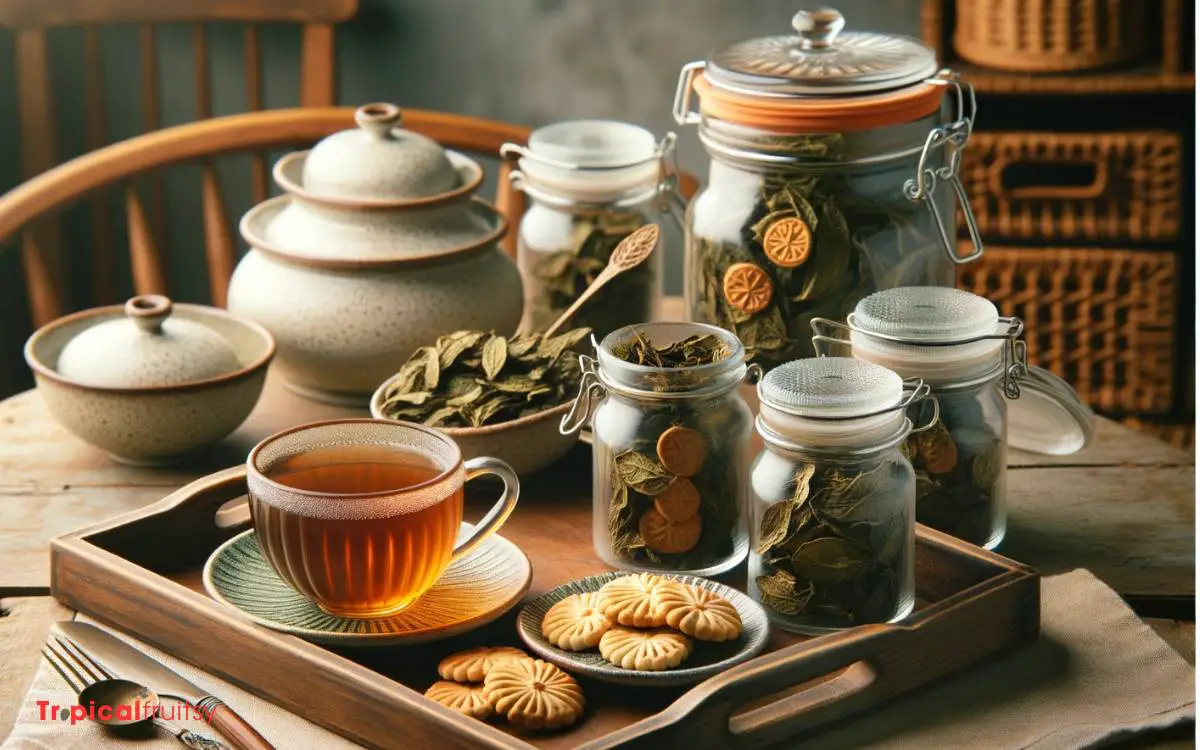
Once prepared, breadfruit leaf tea should be served immediately to enjoy its freshest flavor, and any leftovers can be stored in a sealed container in the refrigerator for up to two days.
It is imperative to note that the tea’s nuanced flavors and potential health benefits are best experienced when consumed fresh.
When storing the tea, ensure the container is airtight to prevent any absorption of odors from the refrigerator. Moreover, avoid reheating the tea multiple times as this could lead to a deterioration of its delicate flavor profile.
Here is a brief table with essential serving and storage tips:
| Aspect | Serving Suggestion | Storage Advice |
|---|---|---|
| Temperature | Serve hot or at room temperature | Keep refrigerated |
| Container | Use pre-warmed cups or glasses | Airtight, odor-free container |
| Consumption | Enjoy immediately for best taste | Consume within two days for best quality |
Conclusion
In the quietude of a serene kitchen, a pot whistles softly, heralding the alchemy of breadfruit leaves into a verdant infusion. The steam carries whispers of the tropics, an aromatic dialogue between nature and nurture.
As the liquid’s hue deepens, so does the appreciation for this ancient practice, steeped in both tradition and healthful promise.
Each cup offers a sip of botanical heritage, an elixir bridging the simplicity of leaves and the complexity of well-being.


